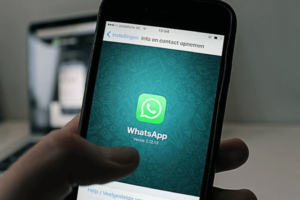Indigo is a deep blue-violet color (hex code: #4B0082), often associated with the night sky or twilight.
The color Indigo has been used in art and fashion for centuries, but its popularity has grown significantly in recent years due to its association with popular culture.
In this article, I will discuss what color indigo is, its history and symbolism throughout different cultures and time periods, as well as the four major tones of indigo that are used today.

What is the History of the Color Indigo?
Indigo is a color in the visible spectrum that is located between blue and violet.
Indigo has a hue of 254-270 degrees on the color wheel, which makes it one of the cooler colors.
Its name comes from the indigo dye derived from plants, which was used widely throughout history for clothing and other fabrics.
In fact, indigo has been widely used as a natural dye since ancient times, with its use first documented in Ancient Greece over 2,500 years ago!
Indigo Meanings and Associations
Throughout history, indigo has held different meanings and symbolism in various cultures.
For example, some Native American tribes believed that wearing or using indigo would bring good luck or ward off evil spirits.
The Hindu religion also associates the color with spiritual awareness and meditation.
In the Christian tradition, it is associated with royalty, while in Asian cultures, indigo represented courage and power.
The Four Primary Tones of Indigo
Today, there are four main tones of indigo used in art and fashion. These are bright indigo, electric indigo, deep indigo and navy blue indigo.
Bright indigo is a lighter and brighter shade of blue-violet which often looks almost purple in hue.
Electric indigo is more vivid and bold than its predecessor and has a metallic sheen to it.
Deep Indigo is a dark bluish-purple hue that has been used for centuries as part of traditional clothing like saris and kimonos.
Navy blue indigo combines the stability of navy blue with the vibrancy of indigo for a deep yet lively color.
The Color Indigo in Pop Culture
Indigo has become increasingly popular in pop culture today.
Indigo is often used to represent mystery and the unknown, with many films, albums and shows featuring indigo as part of their artwork or visuals.
Indigo is also becoming more popular in fashion trends and interior design, with shades of deep indigo being some of the most sought-after colors for home decor this year.
The Color Indigo in Business
Indigo has also been used in business for decades.
The original blue uniforms of postal workers contained indigo dye.
This dye does not run while wet, which is fitting for a job that involves being outside in all sorts of weather.
In the gaming industry, Nintendo’s GameCube used indigo for its console design and logo, symbolizing an exciting and futuristic new era in video games.
Similarly, Indigo Airlines has named itself after the color to capture a sense of luxury, extravagance and success – all qualities that many businesses strive to achieve.
The Color Indigo in Interior Design
In terms of interior design, indigo shades have become increasingly popular as they create a calm and sophisticated vibe.
Businesses such as hotels, restaurants and spas often use this color scheme to evoke a feeling of relaxation among their customers.
Offices are also beginning to experiment with indigo accents like artwork and furniture pieces to create more visually stimulating workspaces.
The Color Indigo For Productivity
Indigo is not only used for aesthetic reasons but has also been found to be helpful in boosting productivity due to its calming nature.
Studies show that using shades of blue-violet can help people focus on their tasks more easily as it reduces stress levels without completely blocking out other colors or distracting elements from view.
Finally, symbols of trustworthiness such as indigo can be used by businesses to help build stronger relationships with their customers or clients.
Indigo conveys stability and dependability which can go a long way in terms of customer loyalty and satisfaction.
Frequently Asked Questions
What color is closest to indigo?
The color closest to indigo is violet.
Indigo and violet are both considered shades of purple, but indigo has a slightly darker hue.
While indigo is one of the seven colors of visible light in the spectrum according to Isaac Newton’s theory, it is not found in rainbows because its wavelength lies outside the range of colors humans can see.
Violet, on the other hand, has a shorter wavelength making it more visible to humans than indigo.
When comparing colors on a traditional color wheel, violet appears directly below indigo and can be identified by its blue-purple hue.
Is indigo blue or purple?
Indigo is generally considered to be a shade of purple, although it can sometimes appear to have a blue hue depending on the light.
On a traditional color wheel, indigo sits directly between blue and violet and can be identified by its slightly darker hue.
Its exact position depends on the individual’s perception of color, but typically falls somewhere in the range of deep blues and purples.
Isaac Newton used the term indigo when describing the visible spectrum of light, which is why it is often associated with being a primary color.
However, its wavelength does not fall within the range of colors humans can see in rainbows, making it less visible than other hues such as violet.
What color is indigo in the rainbow?
Indigo is not a color seen in rainbows because its wavelength lies outside the range of colors humans can see.
While indigo is one of the seven colors of visible light according to Isaac Newton’s theory, violet has a shorter wavelength and appears directly below it on a traditional color wheel.
As such, violet is the closest color to indigo that can be seen in a rainbow, and can be identified by its blue-purple hue.
As indigo sits between blue and violet on the color wheel, it also contains elements of both colors, although it tends towards a darker hue which makes it difficult to distinguish from other shades in a rainbow.
What is the HEX code for indigo?
The HEX code for indigo is #4B0082. Indigo is a color that sits on the spectrum between blue and violet and has a slightly darker hue than both.
In terms of HEX codes, it has a green value of 75, a red value of 0, and a blue value of 130, which combine to form the #4B0082 code.
Indigo can also be identified by its RGB values, which are (75, 0, 130), or in CMYK format as (50%, 100%, 0%, 49%).
In either case the overall tone should appear similar to the traditional shade of indigo with its slightly darker hue.
How is indigo naturally made?
Indigo is naturally made from a variety of plants in the Indigofera family, including Indigofera tinctoria, true indigo and wild indigo.
The dye can be extracted from the leaves, bark or wood of these plants by crushing them and steeping them in warm water.
This process creates a yellow-green liquid that oxidizes to form insoluble blue particles when exposed to air.
These particles are filtered off and combined with an alkali such as lye or ammonia to create a dark blue liquid known as “indigo paste”.
This paste can then be dried into flakes or powder for use in dyeing fabrics.
In some cases, natural indigo may need further processing before it is ready for use.
For example, extracting it from certain species requires heating the material at high temperatures before adding an alkali to achieve the desired color results.
Summary
No matter where it’s used, indigo will always be associated with its rich history and symbolism throughout the world.
Whether you are looking for a vibrant shade to express your creativity or a deeper hue to evoke calmness and inner peace, you can find just what you’re looking for in the world of indigo!
-

Experienced tech journalist and freelancer with over 10 years of experience. Developed expertise in covering tools, new technologies and industry trends.




